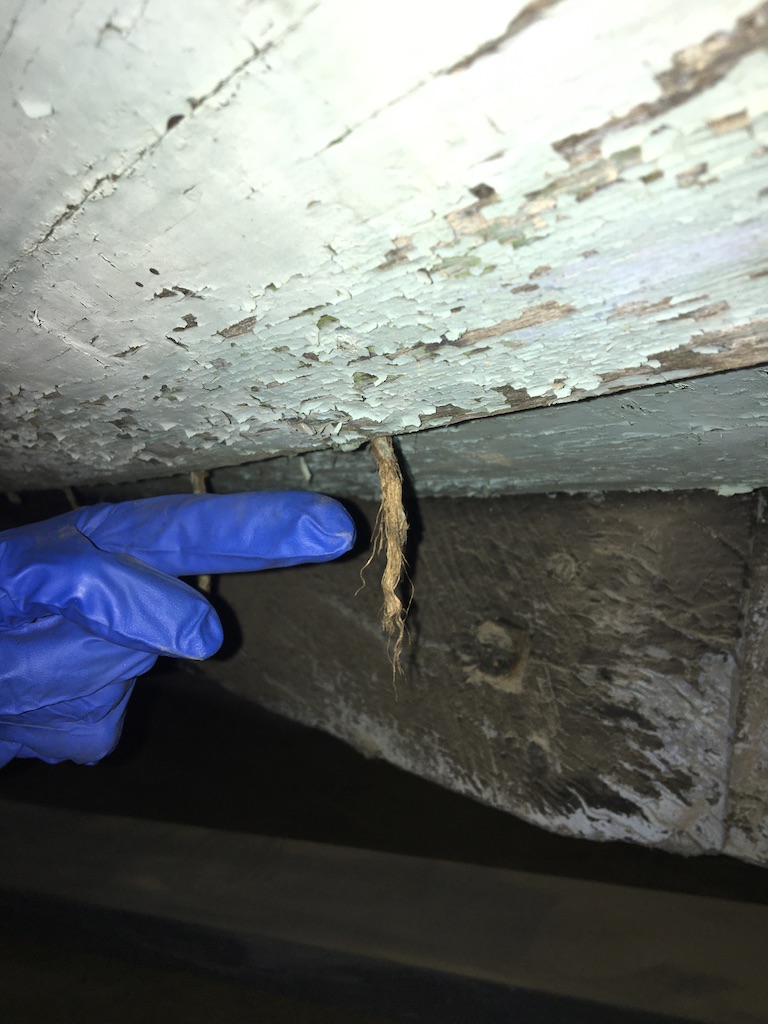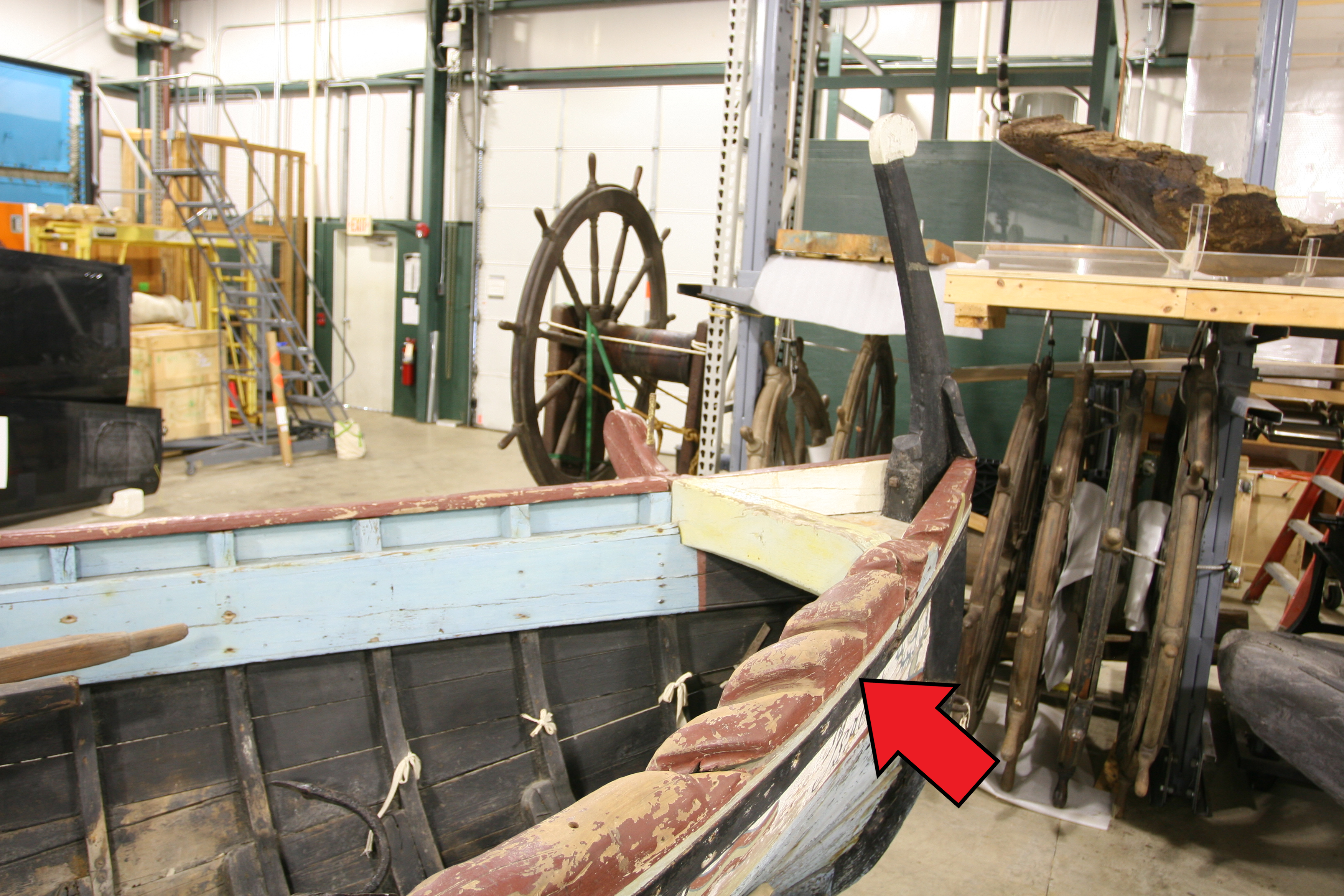Hello again and happy November!
I’m back for another installment of La Isabel project and this week we’re talking about one of my favorite parts of conservation: science! Conservation is an interesting field because it’s highly interdisciplinary. One week I’ll use skills I gained from history courses to research an artifact (check out my 2nd blog post), another I’ll be using technical photography skills for documentation (see my 1st blog post), and then on a week like this I may be using my chemistry and biology knowledge to analyze an artifact!
Analysis is an important part of our job because identifying specific materials in an artifact helps us better understand how an artifact degrades, its history, and much more. For La Isabel, we were interested in learning more about two specific materials: wood and fibers. To do this, I was able to work with Paige Schmidt, our Objects Conservator, who helped me quite a bit with learning the intricacies of identification!
Fiber ID
We began by looking at fibers used in caulking several of La Isabel’s components, specifically the straking and slipwale.
We started by analyzing samples from these components using attenuated total reflectance-Fourier transform infrared (ATR-FTIR) spectroscopy which is a form of analysis that can show us peaks that help us understand how the material is made up. We could tell from this that both fibers were cellulosic.

I wanted to understand the fibers’ features even more to narrow down the identification, so I worked with Paige to mount the fibers on slides and look at them under the microscope. After a little bit of practice, I was able to pick out quite a few important characteristics!
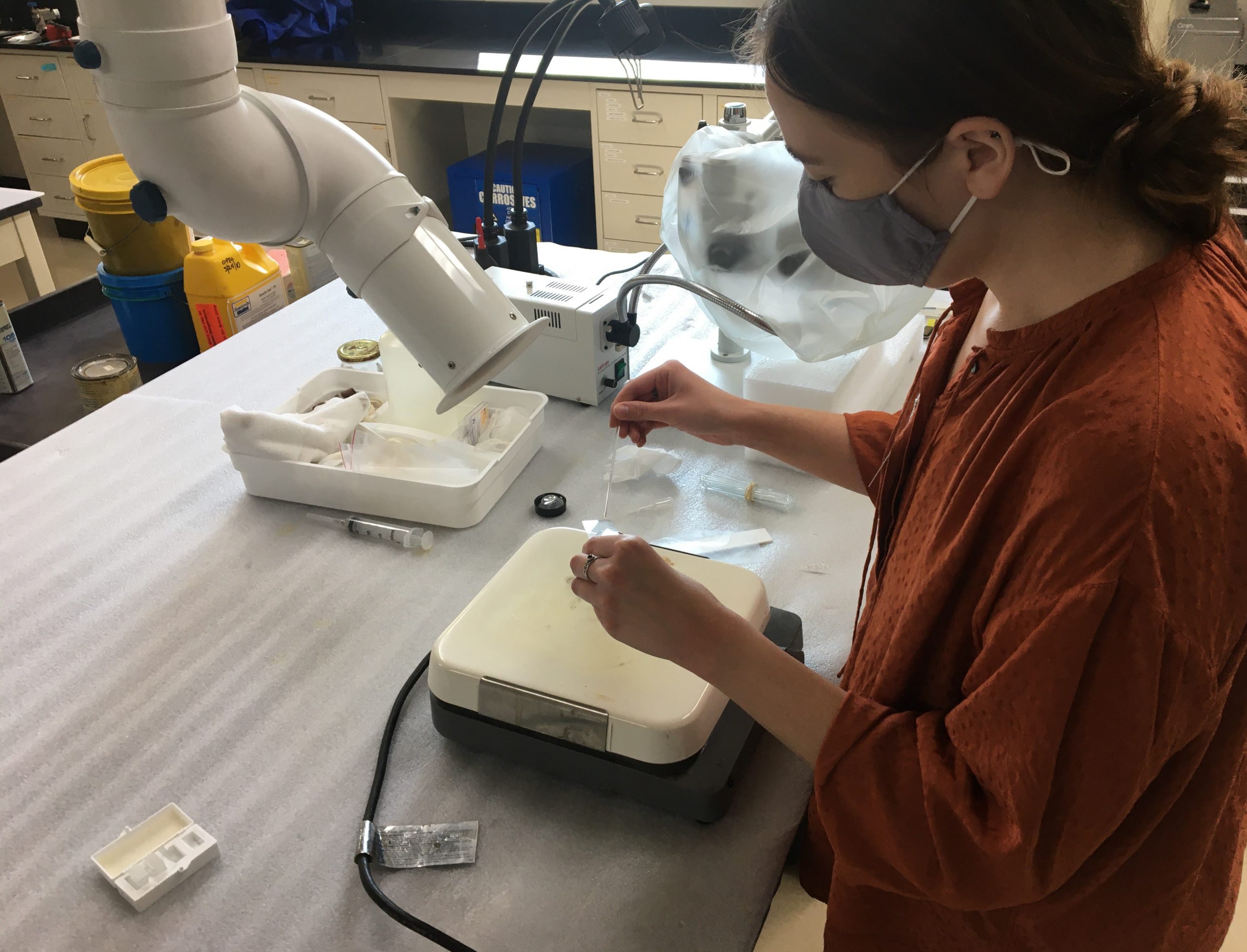
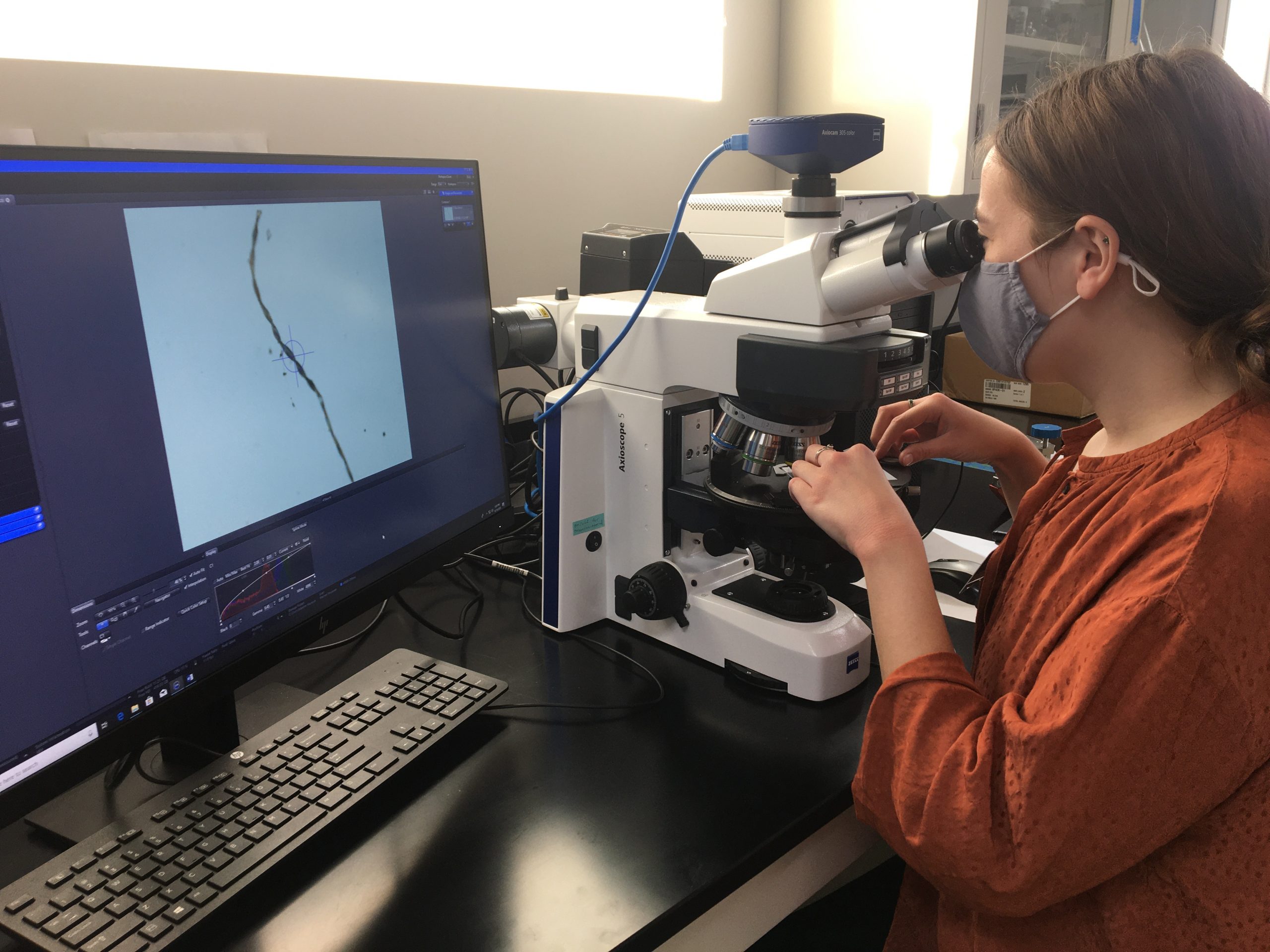
In one sample, I could see cross-marking nodes that create a “bamboo-like” appearance that is a good indicator for flax (linen). In the other sample, the fibers were twisted which is characteristic of cotton. So, I could tell that although they were both cellulosic (specifically plant) fibers, there were different materials used in the caulking during construction!
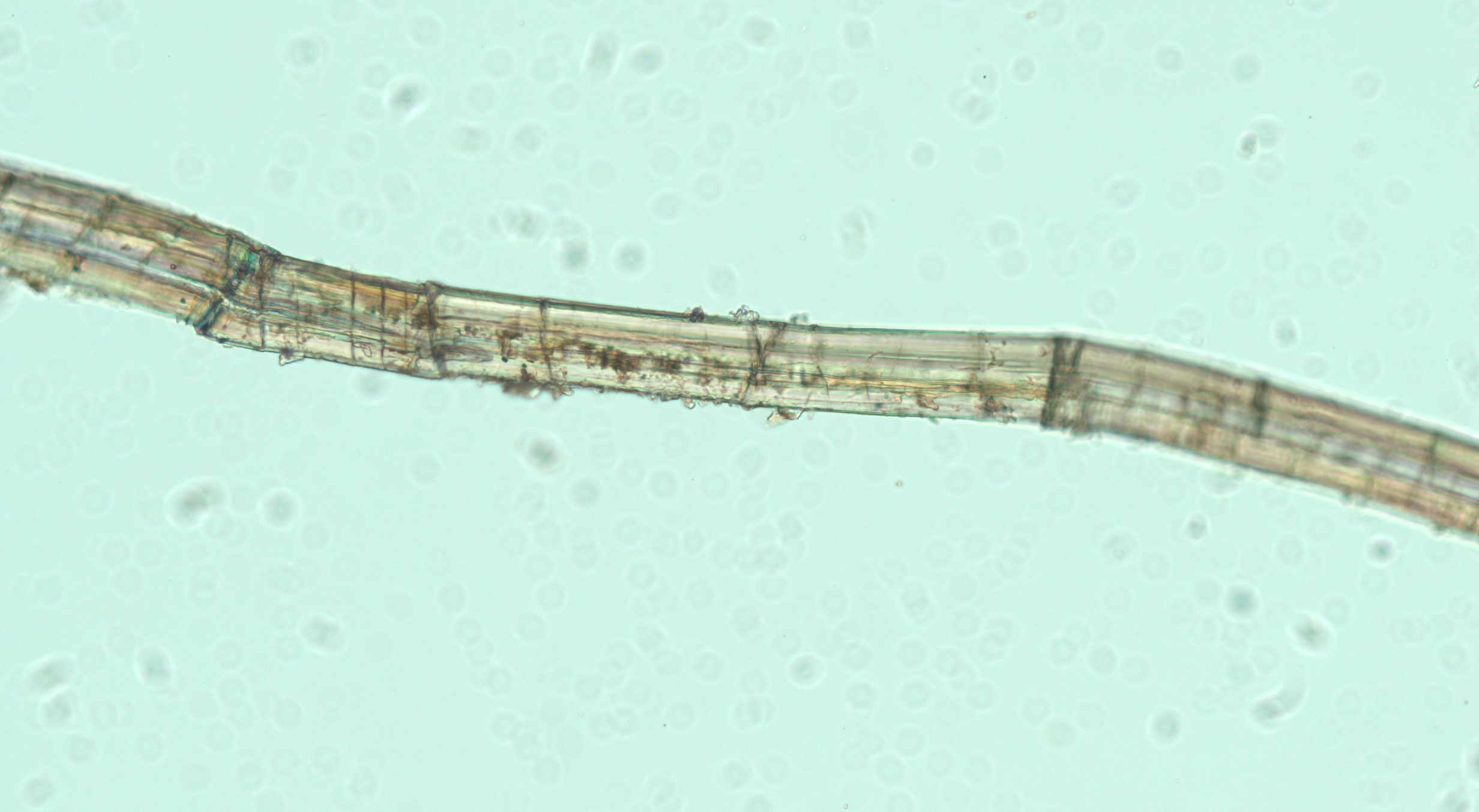
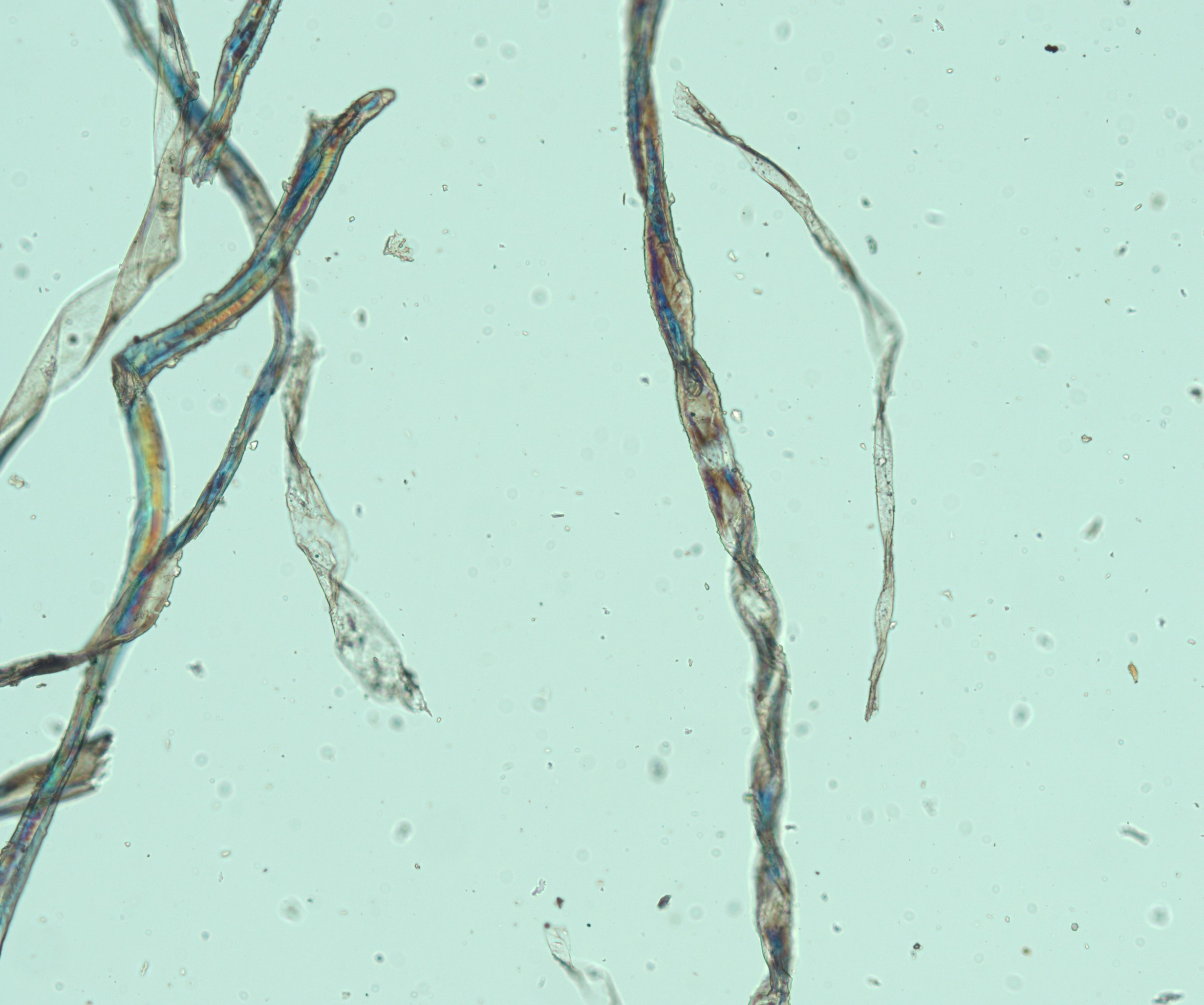
Wood ID
We were also curious about the types of wood used in construction. In particular, the crossbeams in the forecastle were interesting because one was degrading far more than the others and had become detached.
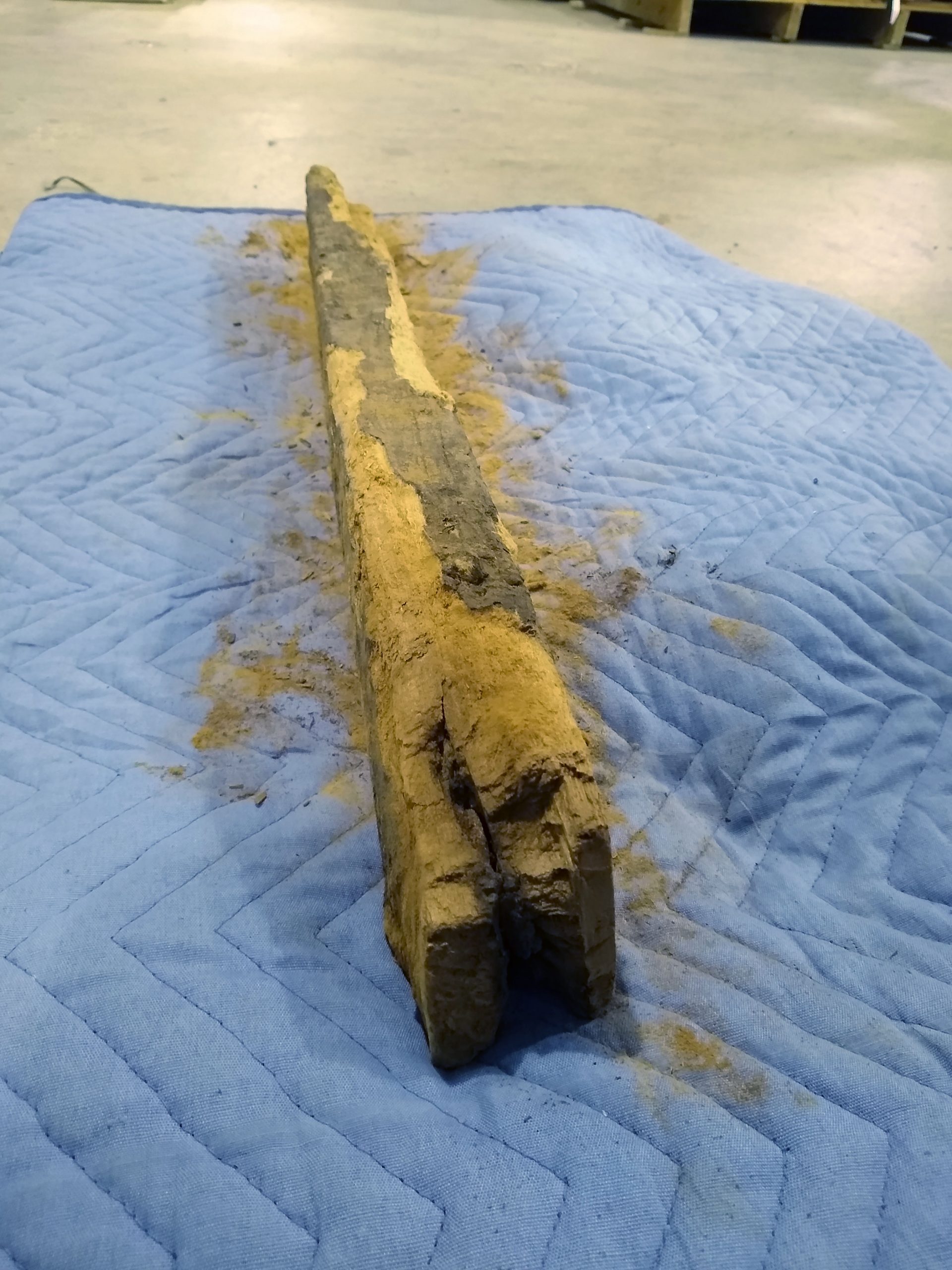
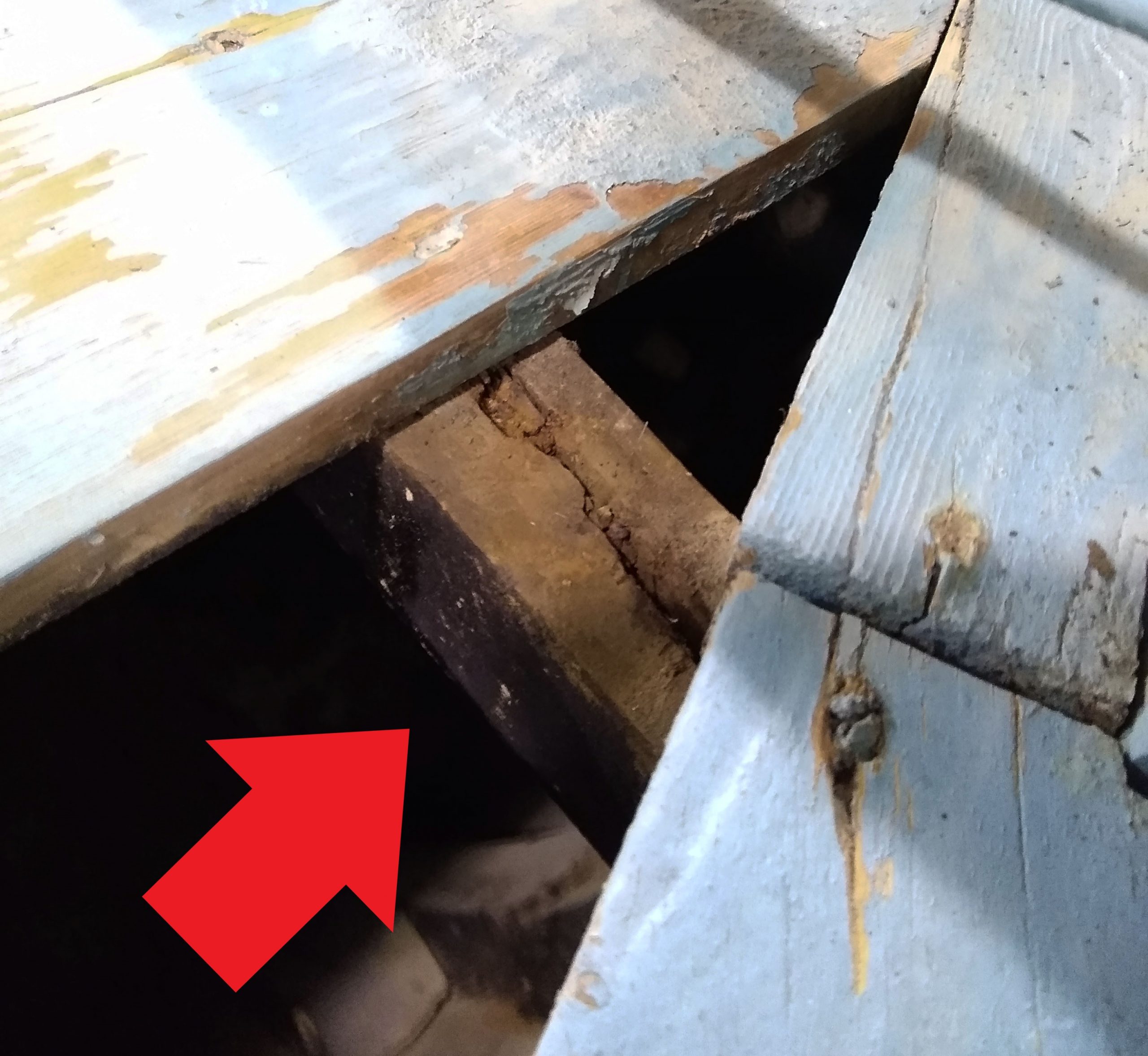
The slipwale was also of interest because, as I mentioned in my last post, the fishing nets were dragged across it so we thought a different (e.g. harder) wood may have been used.
I took samples from each of these components and then removed thin sections from them. This process was a little tricky but with a few tries, lots of patience, and some help from Paige, I was able to get some nice sections that I could look at under the microscope and find specific features for identification. I must say, this was certainly a great chance to hone my wood identification skills that I had been developing while working with Princess Carolina!
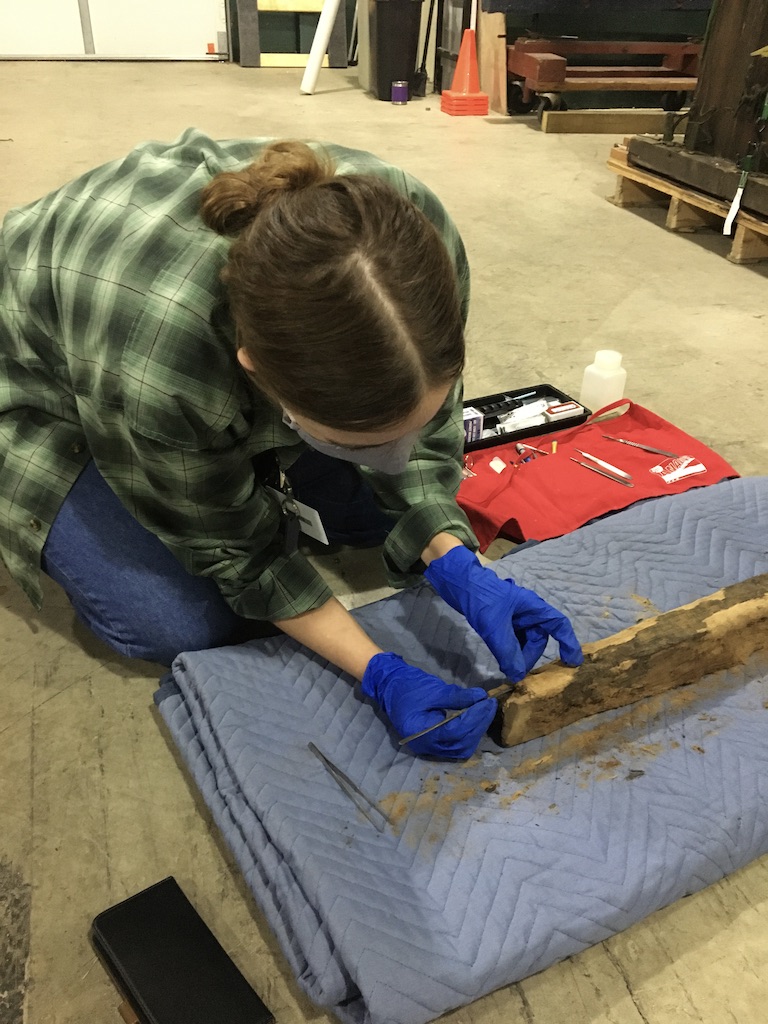
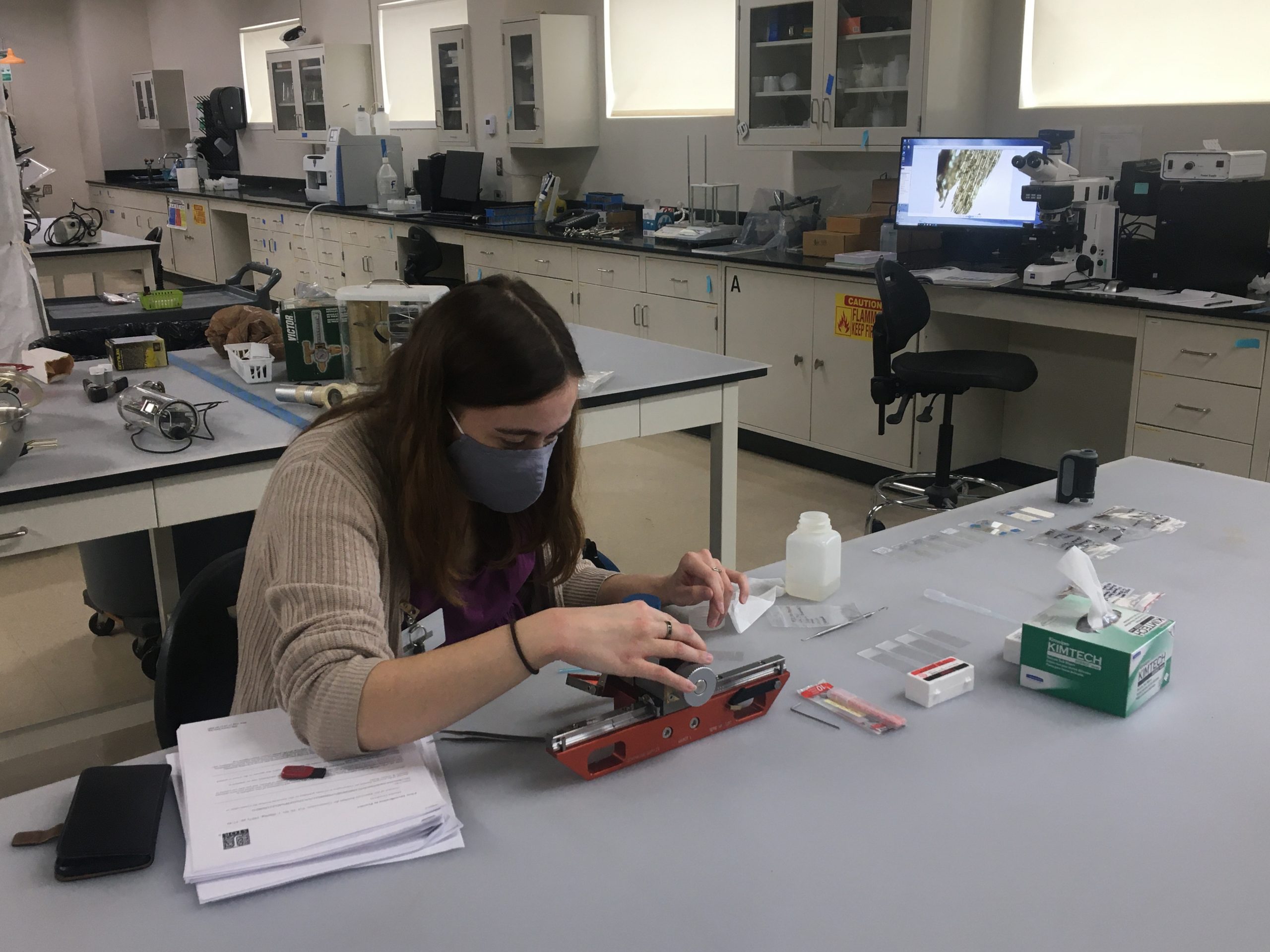
One of the important distinctions we make when identifying wood is whether it’s one of two broad categories: softwood or hardwood. Softwoods (such as firs) have a simpler structure than hardwoods (e.g. oak) which are made up of a multitude of vessel types. When looking at our cross sections under the microscope, I could quickly see we had both softwood and hardwood present in the boat! This already tells us that multiple species were used in La Isabel’s construction.
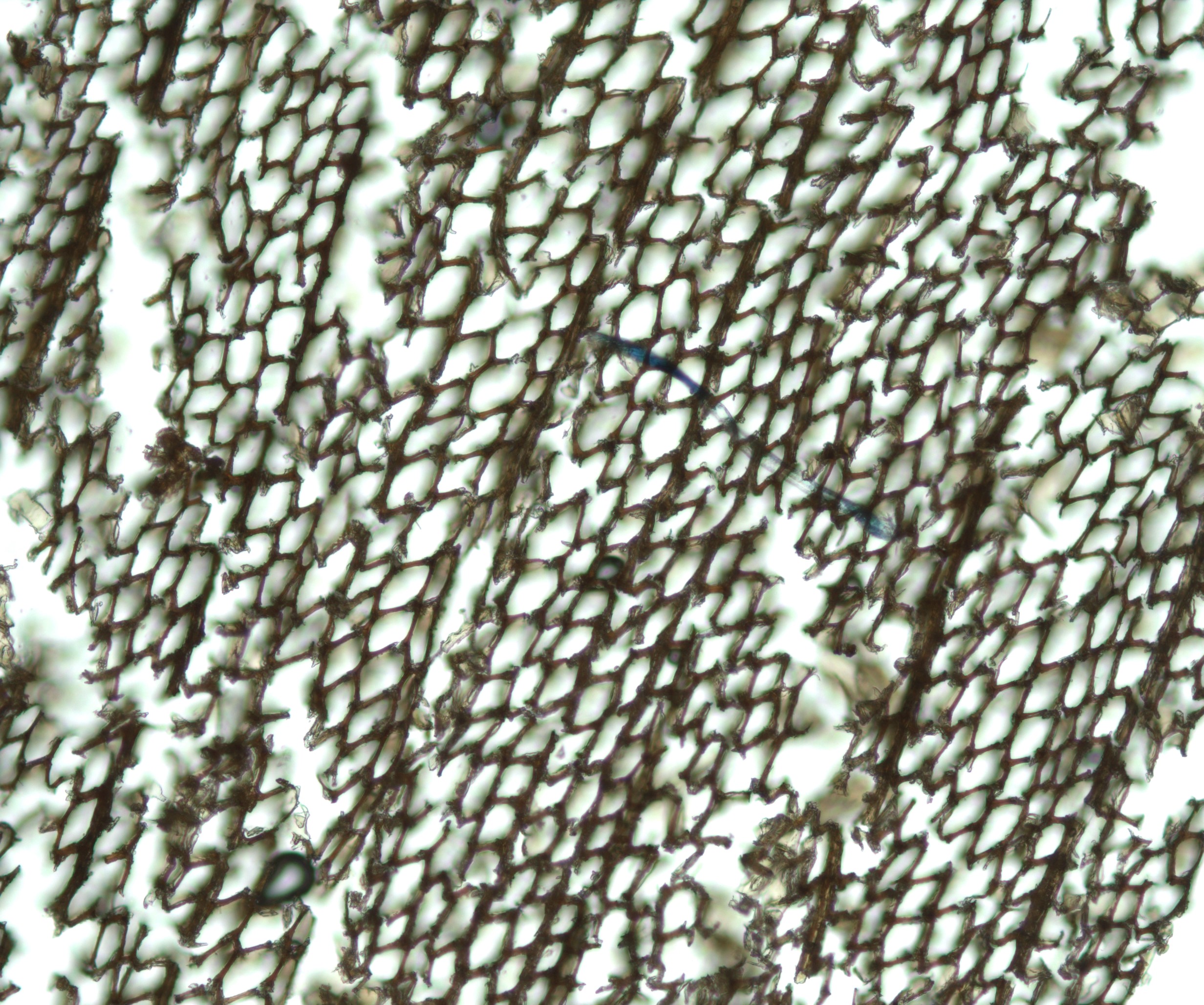
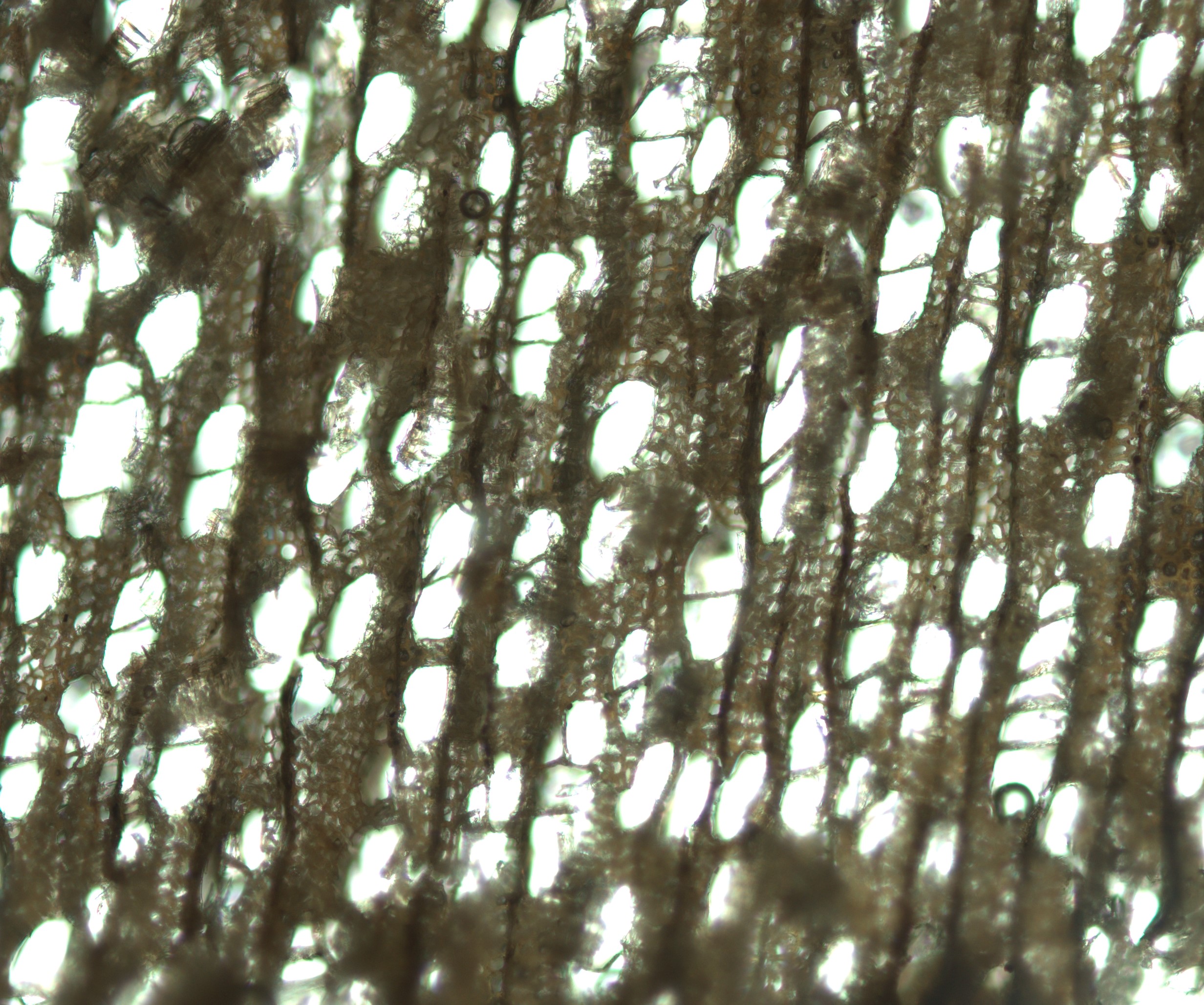
As you might expect, it was pretty difficult to get clean sections from the degrading wood component (it didn’t have much structural integrity). Luckily after several attempts and a lot of investigation, Paige and I were able to pick out a few critical characteristics, specifically that it was a hardwood. This interestingly contrasted the other crossbeam (still attached) that was a softwood, which may explain why they’re degrading differently.
We also looked for more specific features to narrow down the type of wood even more. For example, in the attached wood I could see a feature called “dentate ray tracheids” that are specifically seen in pines so I knew it was within that genus. Similarly, the detached piece showed features that Paige knew were indicative of the Populus genus, sometimes commonly referred to as cottonwoods. This was quite interesting because these are distinctly different types of wood. Wood in the genus Populus is not typical of boat construction, and it is interesting that this component deteriorated so differently than the surrounding elements of the vessel. While the exact history of this crossbeam is not known, it may very well have been a replacement component!
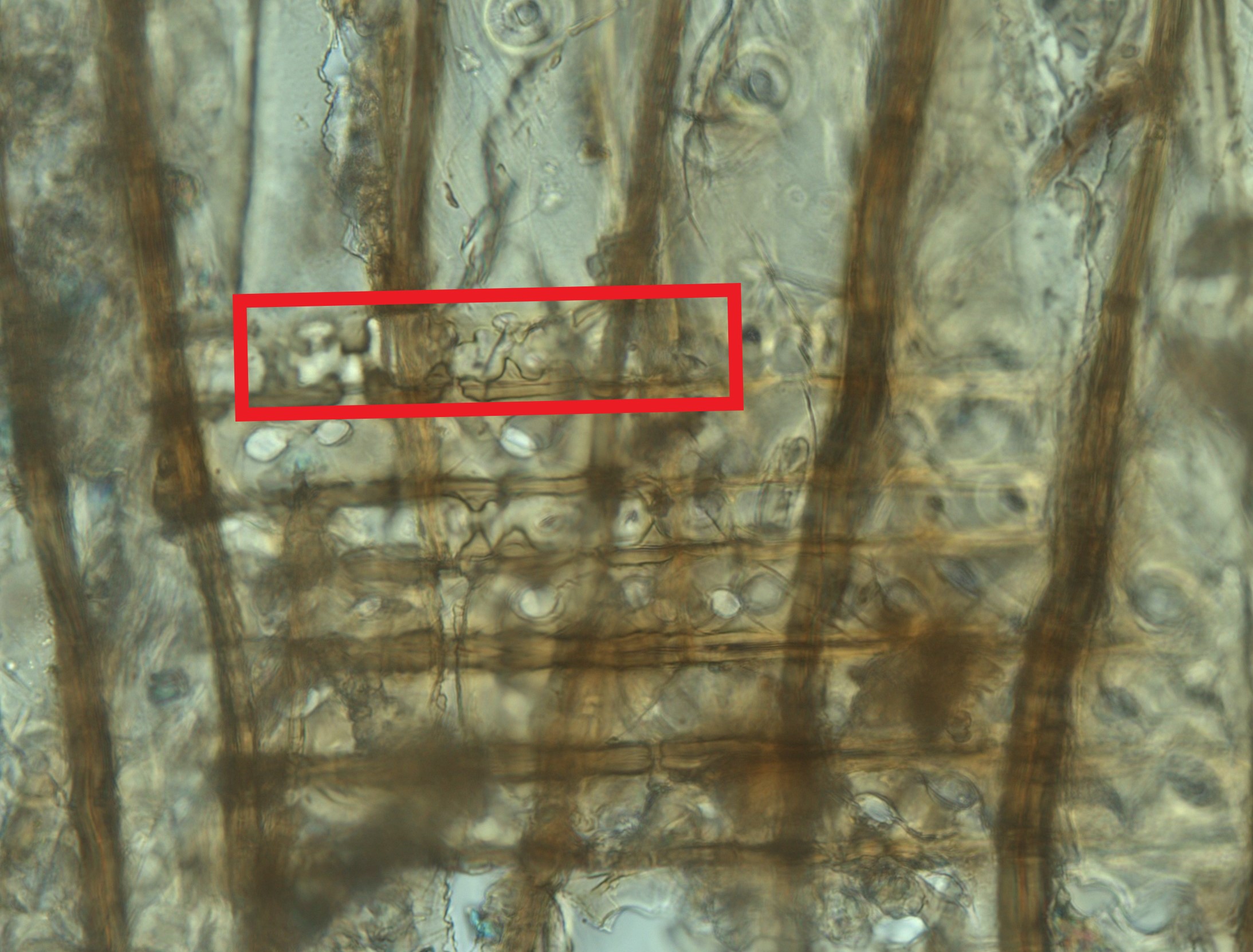
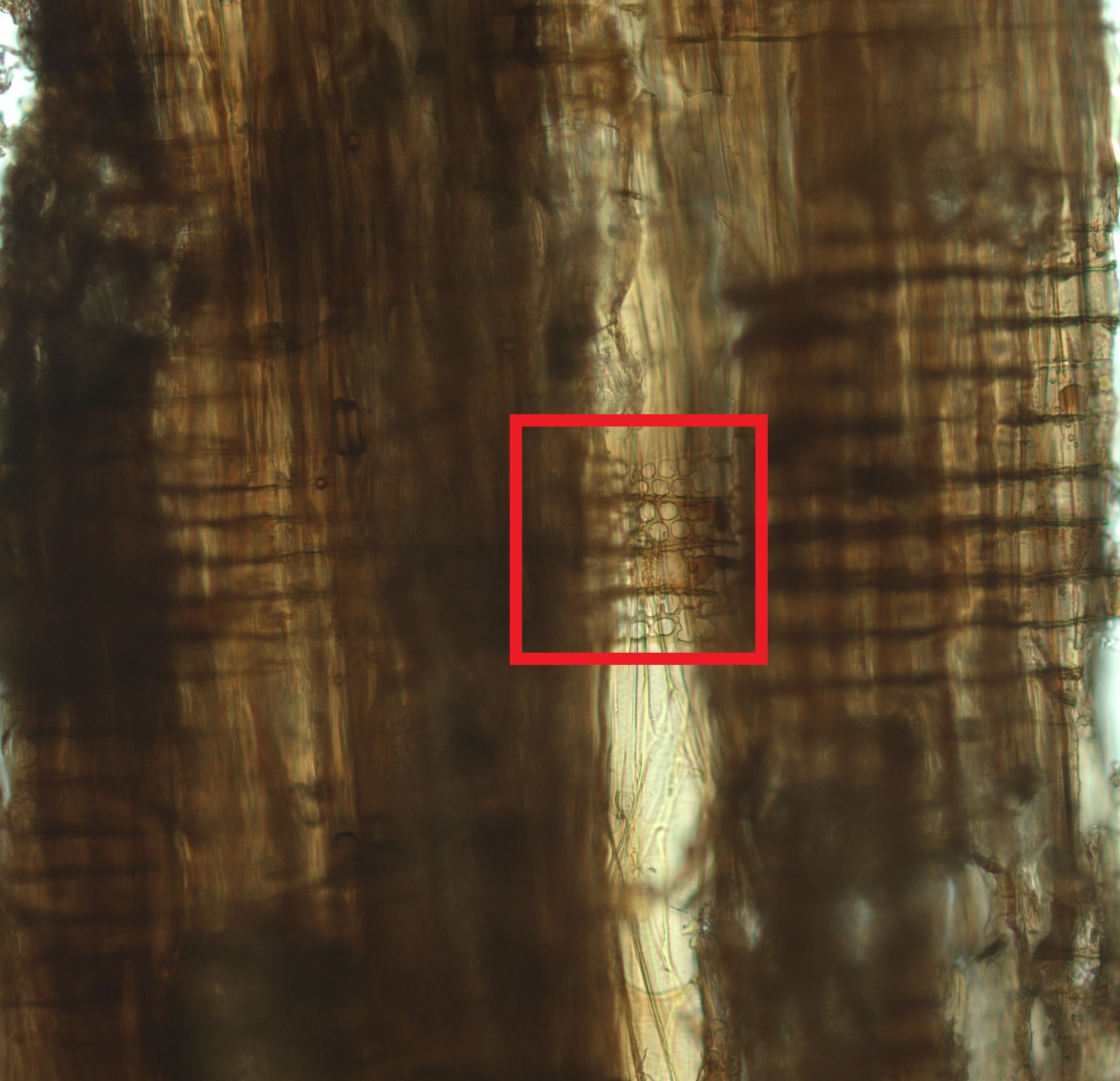
The slipwale was also interesting because it was a hardwood as well but did not appear to be from the same genus as the detached crossbeam. It did have a few distinct features, but I wasn’t able to definitively narrow it down to a specific genus when assessing the common woods that I know. Based on the features I did find, it’s very possible that this is a tropical hardwood that I’m not as familiar with as imported tropical woods have been used in Jábega construction (González, 2018: 21).
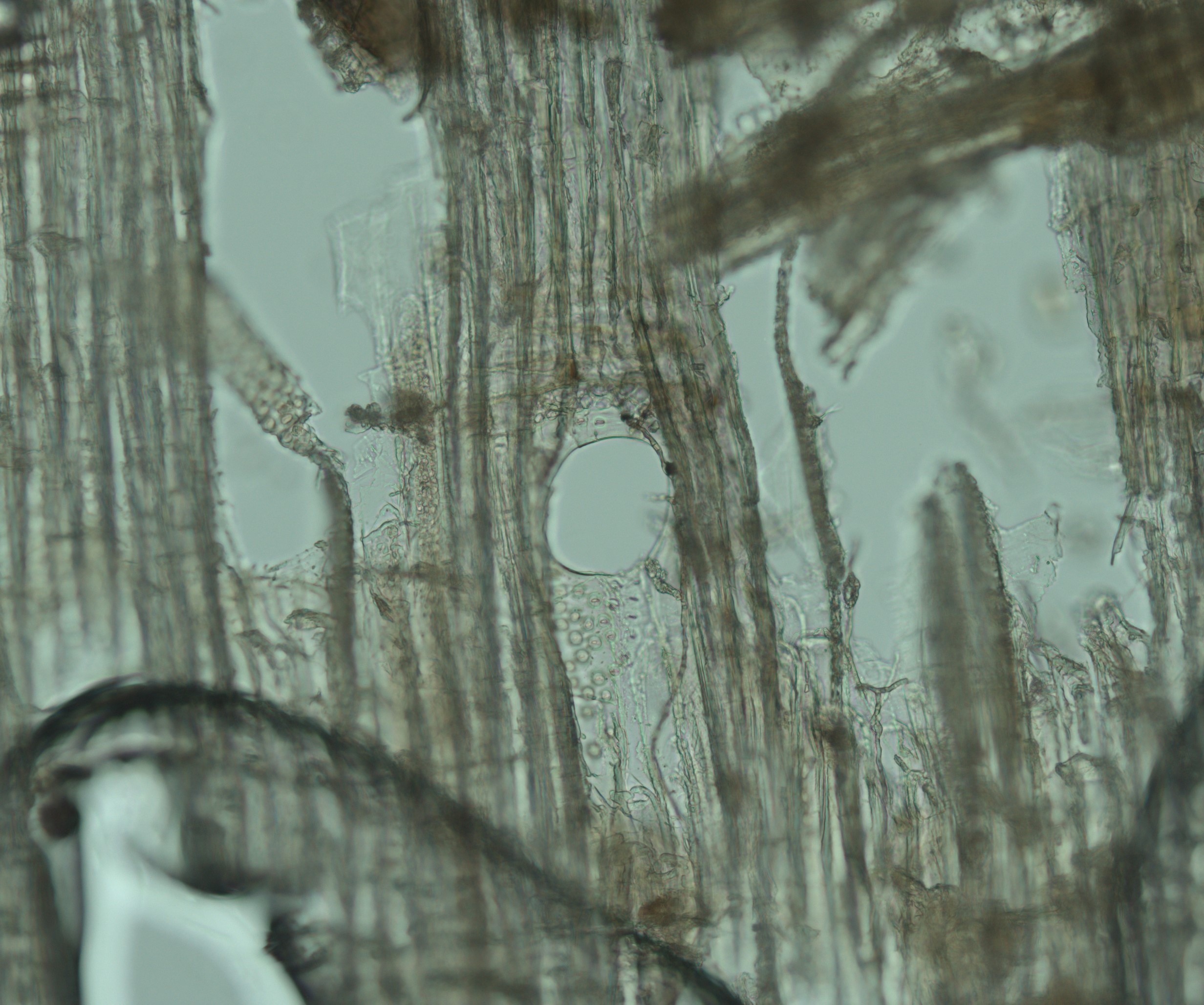
Regardless, this analysis was exciting in that we could see multiple wood types used in La Isabel’s construction. These results in addition to finding multiple fibers used in caulking provide valuable insight into the variety of materials used in La Isabel. Isn’t science amazing?
Anyway, that’s about all I have for now but I’m so glad I got a chance to show you all a bit more of the fun work I get to do every day! Stay tuned for my final blog post in coming weeks as I wrap up my internship and can give a bit more overview of all the wonderful strides we’ve made in this project. Happy weekend, everyone!
Sources
González, I.M. (2018) “The boats of Jabega: Rosario y Ana, A Case Study”, Master thesis, Syddansk Universitet, Denmark.
